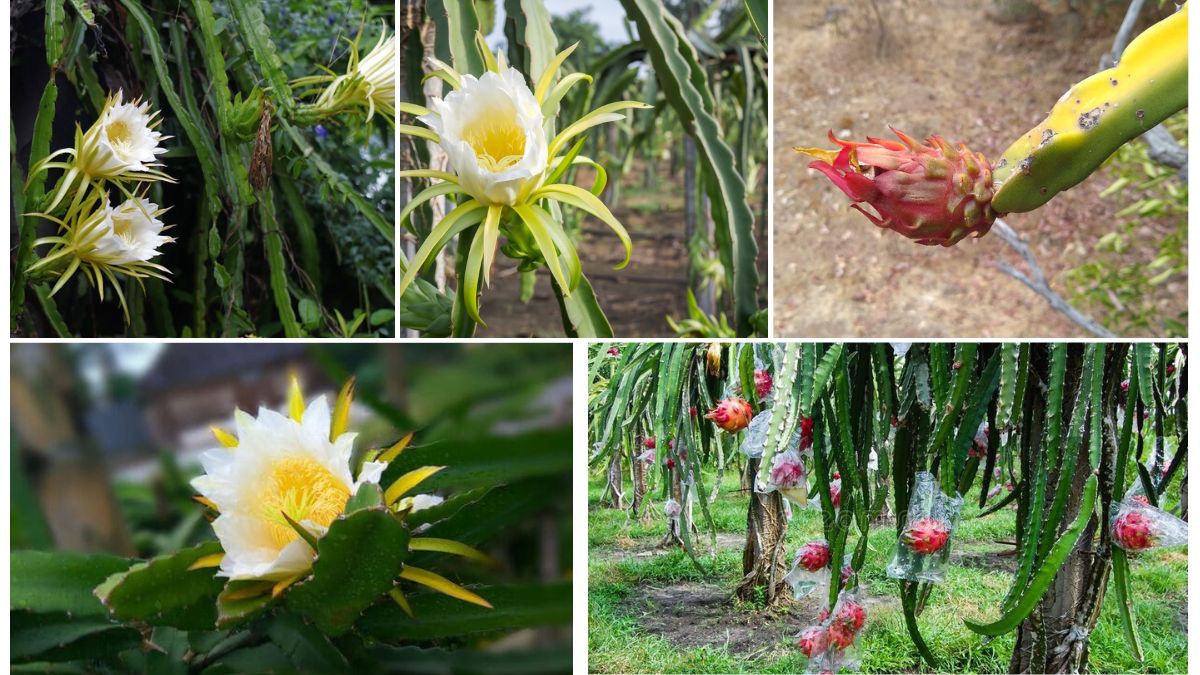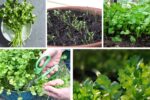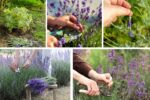Dragon fruit (Hylocereus spp.), known for its vibrant pink or yellow skin and speckled flesh, is not only a tropical delicacy but also a fascinating plant with a unique flowering and pollination process. Successful pollination is essential for fruit production, and understanding how it works can make a big difference for home gardeners and commercial growers alike. This article dives deep into the mechanics of dragon fruit pollination, types of pollinators, manual pollination techniques, and tips to ensure healthy fruiting.
1. Understanding the Basics of Dragon Fruit Flowers
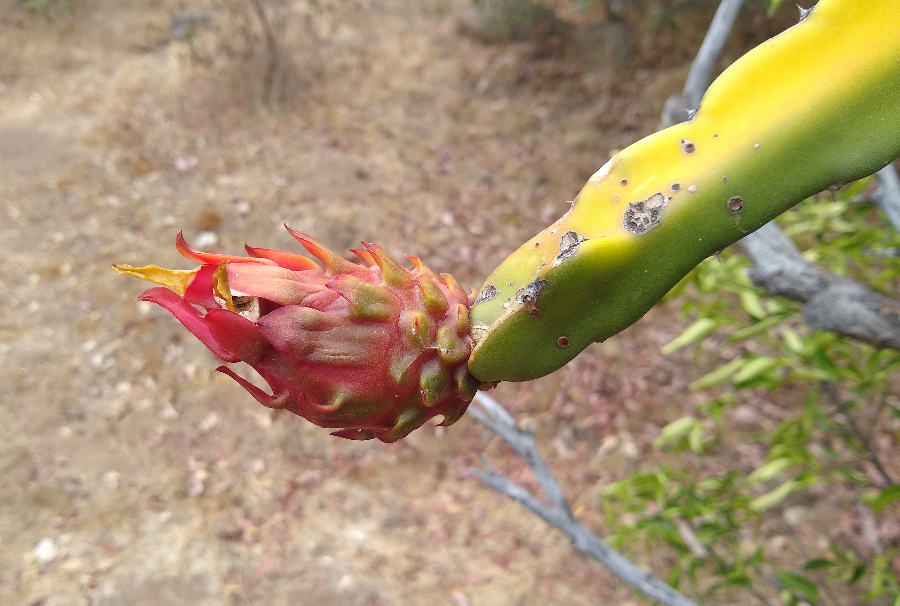
Dragon fruit plants are members of the cactus family and produce large, showy, fragrant flowers. These blooms are often referred to as “moonflowers” because they open at night and close by early morning, typically lasting for only one night.
Key Flower Features:
- Bloom Time: Usually between 8 PM to 2 AM.
- Lifespan: Single-night blooming.
- Structure: Large white flowers (up to 12 inches) with prominent stamens and pistils.
- Fragrance: Sweet, attracting nocturnal pollinators.
The short lifespan of the bloom makes timely pollination critical for fruit set.
2. Self-Pollinating vs. Cross-Pollinating Varieties

Dragon fruit plants fall into two main categories in terms of pollination:
A. Self-Pollinating (Self-Fertile) Varieties
These plants can fertilize themselves with their own pollen. Varieties like Hylocereus undatus (white flesh, pink skin) are often self-fertile.
Advantages:
- No need for external pollinators or cross-pollination.
- Easier for home or container gardening.
B. Cross-Pollinating (Self-Sterile) Varieties
These require pollen from another genetically different plant to produce fruit. Varieties like Hylocereus costaricensis (red flesh) often fall into this category.
Implications:
- You’ll need at least two compatible varieties for successful fruiting.
- Manual pollination or the presence of night-time pollinators is essential.
3. Natural Pollinators of Dragon Fruit
In their native tropical and subtropical environments, dragon fruit flowers are primarily pollinated by:
A. Bats
Bats are the primary natural pollinators due to the nocturnal nature of the blooms. The flowers’ scent and size are tailored to attract them.
B. Moths
Large nocturnal moths are secondary pollinators, especially in areas where bats are scarce.
C. Bees and Other Daytime Insects
These may pollinate early in the morning if the bloom is still open, but their effectiveness is limited due to the flower’s closing timing.
4. Why Natural Pollination May Fail
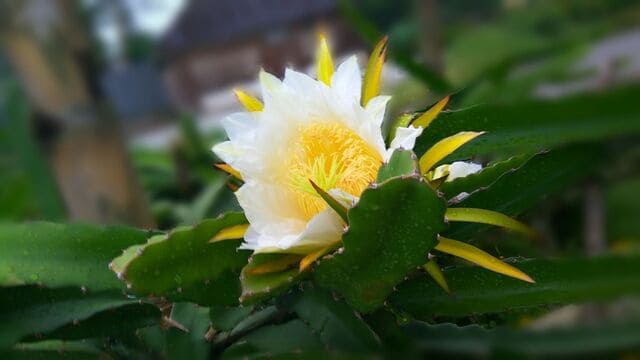
In urban or indoor environments, natural pollination often fails due to the absence of nocturnal pollinators. The following conditions may also affect pollination:
- Lack of compatible cross-pollinator varieties
- Poor flower development due to stress or improper care
- Excessive rain or humidity washing away pollen
- Insecticide use that deters or kills pollinators
Hence, hand pollination becomes an important skill for dragon fruit growers.
5. Manual Pollination: A Step-by-Step Guide
Manual or hand pollination mimics the role of pollinators and ensures higher fruit set rates. Here’s how to do it effectively:
Step 1: Identify Open Blooms
Visit your plant during peak blooming hours (9 PM – 2 AM). A fully open flower will look like a white trumpet with exposed stamens and stigma.
Step 2: Gather Tools
You’ll need:
- A soft-bristled brush (like a paintbrush or makeup brush)
- A flashlight or headlamp
- Small container (if collecting pollen)
Step 3: Collect Pollen
Use the brush to gently gather yellow pollen from the stamens (male part). You can either:
- Transfer it directly to the stigma (female part) of the same flower (if self-pollinating), or
- Store it briefly in a container and apply it to another flower (for cross-pollinating).
Step 4: Apply the Pollen
Gently dust the pollen onto the sticky, lobed stigma. Ensure contact is firm enough to deposit pollen grains.
Step 5: Label the Pollinated Flowers (Optional)
If you’re managing multiple plants or varieties, use a tag or ribbon to mark flowers you’ve pollinated.
6. Tips to Improve Pollination Success
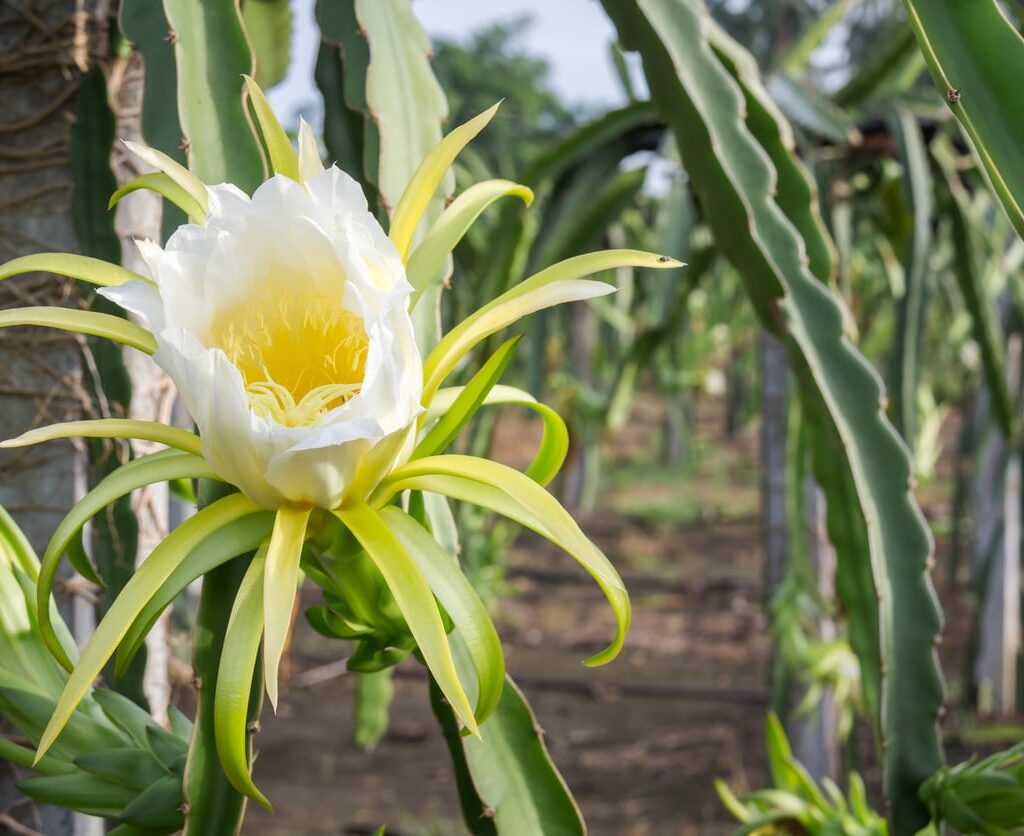
To maximize fruit yield, apply these tips:
Choose Compatible Varieties
If growing multiple plants, pick genetically diverse cultivars for better cross-pollination.
Use Fresh Pollen
Pollen loses viability quickly, so use it within a few hours of collection.
Store Pollen (Short-Term)
Pollen can be stored in a cool, dry place or even frozen for a few days to extend viability.
Encourage Flowering
Proper sunlight, watering, and balanced fertilizers help encourage regular blooming.
Prune for Access
Trim the cactus pads to keep the plant manageable and expose flower buds for easier pollination access.
7. Signs of Successful Pollination
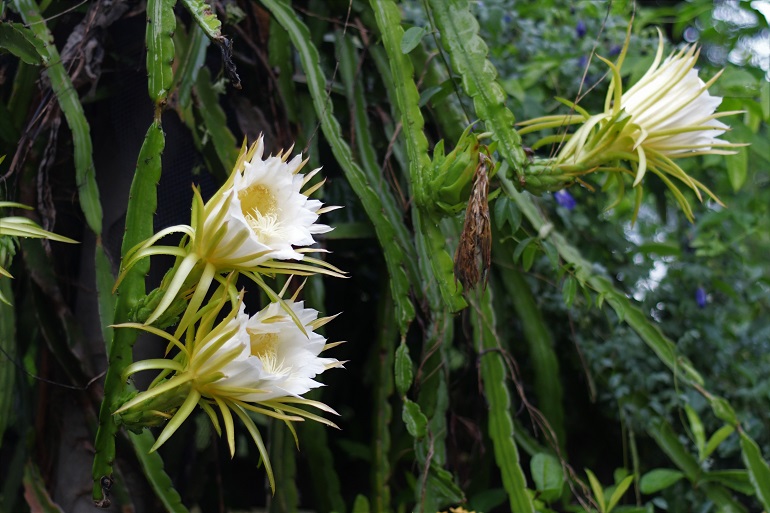
Within a few days of successful pollination, you’ll observe:
- The flower wilting and drying up
- The ovary (at the base) swelling into a developing fruit
- Continued fruit enlargement over 20–30 days
If the flower drops off entirely without any swelling, pollination likely failed.
8. Common Pollination Mistakes to Avoid
- Using pollen too late: Pollen deteriorates rapidly; collect and use it within hours.
- Too gentle or too rough application: Apply pollen firmly but gently to ensure transfer.
- Pollinating too early or too late: Always pollinate after the flower is fully open and while the stigma is still receptive.
- Using the wrong varieties: Trying to cross-pollinate two self-sterile varieties with similar genetics may not result in fruit.
9. Pollination in Controlled Environments
For indoor, rooftop, or greenhouse cultivation:
- Supplemental lighting may help mimic natural environments for flower health.
- Manual pollination becomes the main route due to lack of nocturnal pollinators.
- Humidity and airflow control are crucial to prevent fungal issues post-pollination.
10. Future of Dragon Fruit Pollination: Research and Innovation
With growing global interest in dragon fruit farming, researchers are working on:
- Developing hybrid varieties that are self-fertile yet high-yielding.
- Studying floral biology to optimize pollination windows.
- Enhancing indoor pollination techniques using soft robotic pollinators and pollen applicators.
Conclusion
Pollination is at the heart of successful dragon fruit cultivation. Whether you’re growing a few plants on a balcony or starting a rooftop dragon fruit garden, understanding the flowering process and mastering hand pollination can significantly boost your yield. With a little observation, some night-time effort, and the right technique, you can enjoy a rewarding harvest of this exotic and nutritious fruit—right from your own home garden.
